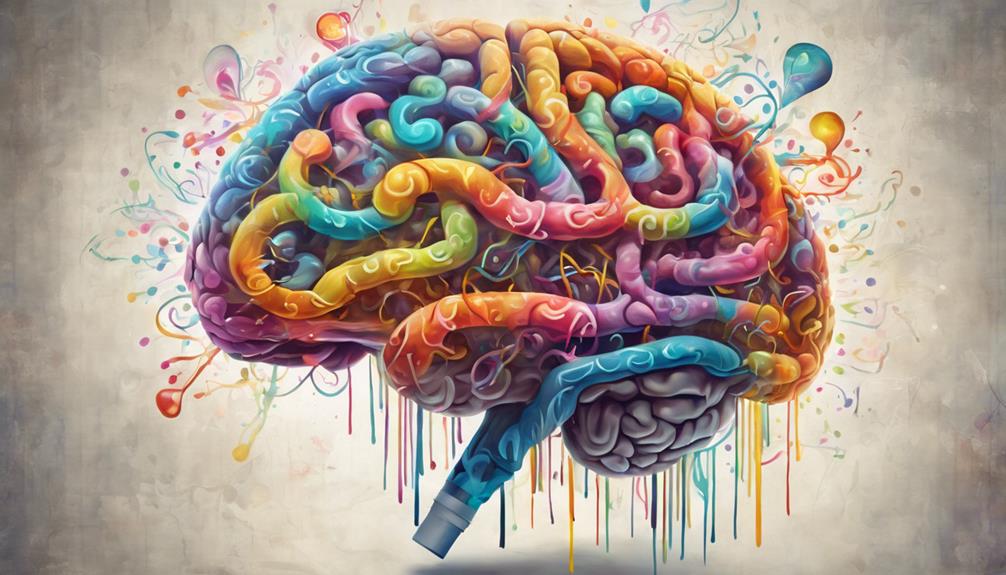Creativity, a fundamental aspect of human cognition, is a multifaceted phenomenon that remains an enigma in many ways. From the intricate interplay of neural networks in the brain to the psychological mechanisms that underpin innovation, understanding how creativity operates is a complex puzzle that researchers have been striving to piece together. By delving into the cognitive processes, psychological intricacies, and human experiences that shape creative thinking, we can begin to unravel the mystery behind how novel ideas are conceived and brought to fruition.
Key Takeaways
- Creative processes involve cognitive functions like working memory, abstraction, and cognitive flexibility.
- Innovation relies on divergent thinking, mental recombination, and enhanced cognitive control.
- Artistic expression conveys messages through various mediums for emotional and cultural impact.
- Creative inspiration stems from diverse sources like nature, collaboration, and embracing challenges.
The Cognitive Processes of Creativity
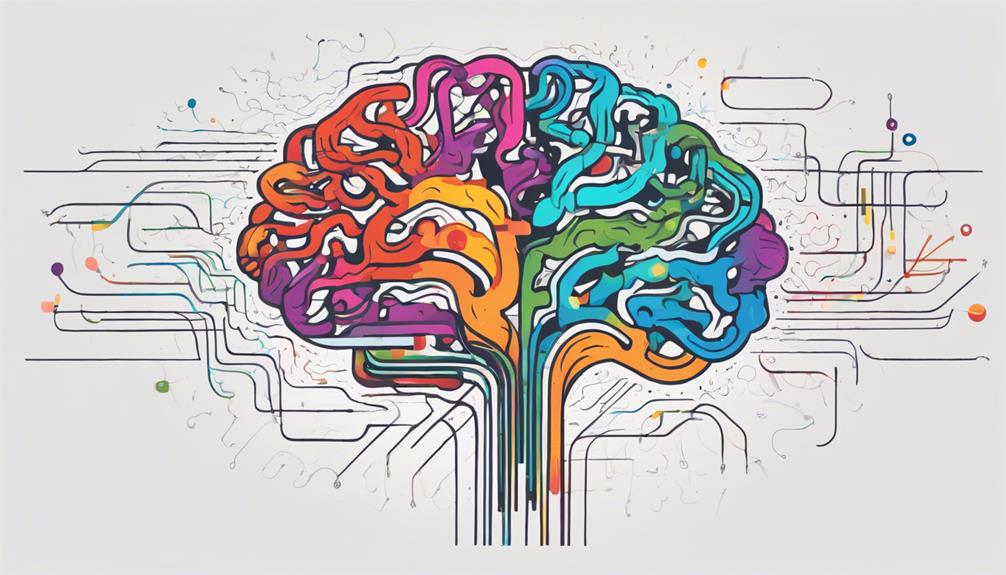
Frequently, the cognitive processes of creativity involve intricate mental operations such as working memory, abstraction, planning, and cognitive flexibility. The brain plays a central role in creative thinking, with neuroscience offering insights into the underlying mechanisms. Creative processes are governed by cognitive control functions that manage attention, memory, and decision-making. Imaging studies have provided valuable information on the neural networks involved in creativity, highlighting the dynamic interplay between different brain regions during tasks requiring innovative solutions.
Understanding the creative process involves delving into how the brain integrates diverse ideas and concepts to generate novel outcomes. Cognitive flexibility allows individuals to adapt their thinking strategies, explore multiple perspectives, and overcome mental constraints. Planning and working memory enable the manipulation and organization of information, while abstraction facilitates the extraction of essential elements from complex stimuli. By studying the neural correlates of creative thinking, researchers aim to unravel the intricacies of human innovation and shed light on the cognitive foundations of creativity.
Psychological Mechanisms Behind Innovation
Exploring the psychological mechanisms underlying innovation reveals the intricate interplay of cognitive processes such as divergent thinking, abstraction, and cognitive flexibility. Creative individuals often engage in mental recombination, a process that involves combining existing ideas in novel ways. Studies have shown that creative people exhibit enhanced cognitive control, enabling them to efficiently switch between different thinking modes. When tackling innovative tasks, the brain's executive network plays a crucial role in directing attention and cognitive resources. Research in psychology suggests that creativity is a complex phenomenon influenced by a combination of cognitive processes and neural mechanisms. By studying brain activity in creative individuals during innovative tasks, scientists aim to uncover the underlying neural mechanisms that contribute to creativity. Understanding the interplay between cognitive control, neural mechanisms, and creative thinking is essential in unraveling the mysteries of innovation.
Understanding Artistic Expression

Artistic expression encompasses the communication of emotions, ideas, and experiences through a variety of creative mediums such as painting, sculpture, music, and dance. Artists harness creativity to convey their unique perspectives and spark interpretations among viewers. This form of expression allows for the exploration of themes, concepts, and narratives that can provoke thought, evoke emotions, and inspire change.
- Artists use different mediums and techniques to communicate their creativity and messages.
- Artistic expression can serve as a powerful tool for self-expression, cultural representation, storytelling, or social commentary.
- Interpretation of artistic expression is subjective, leading to diverse reactions and individual perceptions among viewers.
Understanding artistic expression involves delving into the depths of creativity, where ideas are transformed into tangible forms that resonate with audiences on emotional and intellectual levels. Through this lens, viewers engage with the artist's world, interpreting and reflecting on the communicated emotions and ideas, thus contributing to the richness and complexity of artistic endeavors.
Unraveling Creative Inspiration
The exploration of creative inspiration delves into the intricacies of how the mind operates when generating novel ideas. Understanding the sources of inspiration and the cognitive processes involved in sparking creative thoughts is crucial for unraveling the mysteries of creativity. By dissecting the mechanisms of epiphanies and studying the brain's functions during moments of insight, researchers aim to shed light on the enigmatic nature of creative inspiration.
Sources of Inspiration
Diverse sources, including nature, music, art, literature, and personal experiences, serve as catalysts for creative inspiration. Neuroscientific studies indicate that exposure to novel stimuli and environments can spark creative inspiration. Engaging in activities like meditation, travel, and exposure to different cultures can stimulate creative inspiration. Collaborating with others, attending creative workshops, and exploring new hobbies can ignite creative inspiration. Keeping a journal, capturing ideas on the go, and allowing time for reflection can nurture creative inspiration.
- Nature's beauty
- Melodies weaving through the air
- Strokes of a paintbrush creating a masterpiece
Sparking Creative Ideas
Exploring the mechanisms behind the process of creative idea generation unveils the intricate interplay between varied stimuli and cognitive processes. Creativity research delves into the neuroscience of creativity, shedding light on how sparking creative ideas involves intricate brain processes and thought mechanisms. Exposure to diverse experiences, engaging in activities like daydreaming and meditation, collaborating with a diverse group, embracing ambiguity, and seeking out challenges are all catalysts for generating creative ideas. Understanding how these factors interact within the brain provides insight into the complex web of processes that underlie creative inspiration. By unraveling the cognitive intricacies involved in sparking creative ideas, researchers aim to enhance our comprehension of the fundamental principles that drive innovation and artistic expression.
Exploring Human Innovation
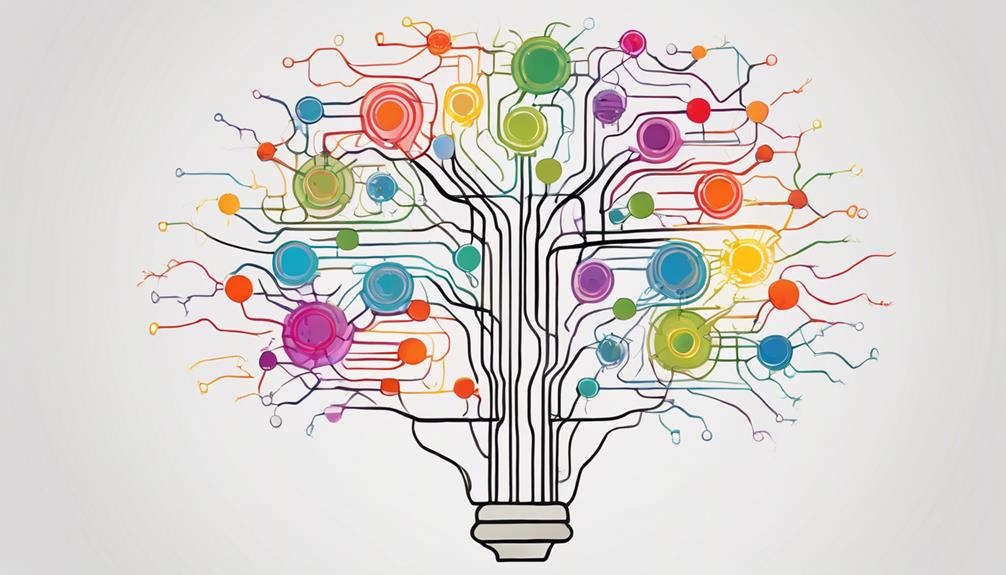
Amongst the intricate workings of human cognition, a fascinating realm emerges when delving into the depths of innovative thought processes. Studying jazz musicians provides valuable insights into the neural processes involved in creative improvisation. Brain scans have shown increased activity in brain regions associated with self-expression and spontaneity during musical improvisation. Moreover, jazz musicians exhibit enhanced connectivity between brain regions linked to creativity and self-monitoring. Understanding how these musicians innovate offers a unique perspective on the neural mechanisms that underlie creative thinking.
- Jazz musicians offer a unique lens into the neural processes of creative improvisation.
- Brain scans illuminate the heightened activity in regions connected to self-expression and spontaneity during musical improvisation.
- Enhanced connectivity between brain regions associated with creativity and self-monitoring is observed in jazz musicians, shedding light on the neural basis of innovative thinking.
Probing Cognitive Drivers of Creativity
Investigating the cognitive processes that drive creativity involves a detailed examination of working memory, abstraction, planning, and cognitive flexibility. Creative thinking relies on the brain's ability to mix and remix mental representations to generate novel ideas. Neuroscientists delve into how the brain networks different regions to unravel the underlying mechanisms of creative thought. Creative individuals exhibit enhanced connectivity between these brain networks, which facilitates the generation of original and innovative ideas. Understanding these cognitive drivers of creativity is pivotal for enhancing creative thinking skills and fostering innovation across various domains.
| Cognitive Drivers | Description |
|---|---|
| Working Memory | The ability to hold and manipulate information in mind temporarily. |
| Abstraction | The process of filtering out and focusing on essential aspects of a concept. |
| Planning | Strategizing and organizing thoughts and actions towards a specific goal. |
This table provides a structured overview of the cognitive drivers crucial for nurturing creative thinking processes.
Decoding Psychological Creativity
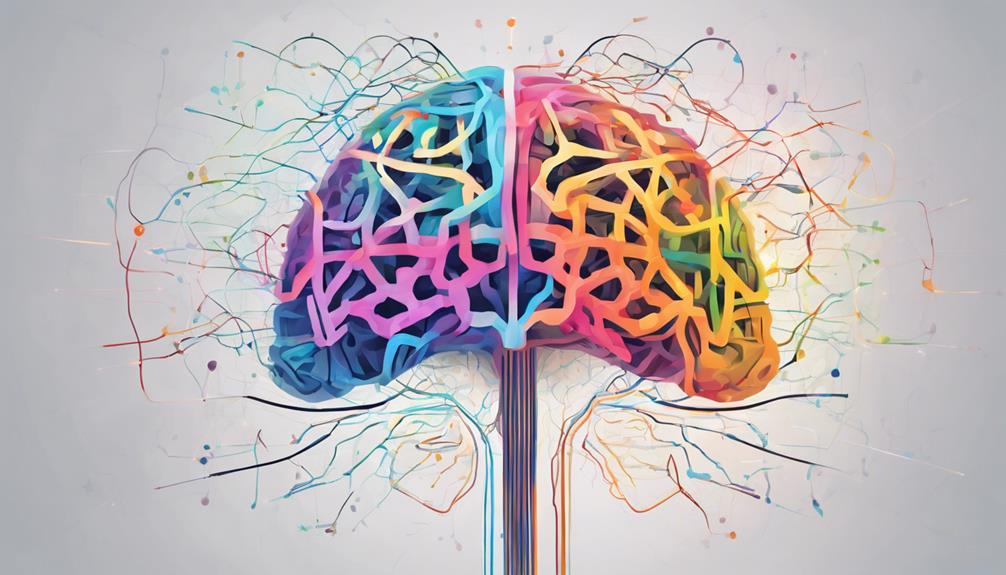
Psychological creativity involves the intricate interplay of various cognitive processes, such as divergent thinking and creative problem-solving. Understanding the mechanisms behind brainstorming creative ideas, unraveling the nuances of divergent thinking, and delving into the depths of creative problem-solving are crucial aspects in deciphering the complexities of psychological creativity. By decoding these fundamental components, researchers can gain valuable insights into the cognitive underpinnings of innovation and problem-solving.
Brainstorming Creative Ideas
In the realm of creative ideation, the process of brainstorming plays a pivotal role in unlocking innovative solutions and novel concepts. Creative brainstorming involves divergent thinking, where individuals generate multiple ideas. Psychological creativity is influenced by cognitive flexibility and the ability to think outside the box. Brainstorming activates the default network in the brain, allowing for spontaneous idea generation. Encouraging wild ideas and suspending judgment can enhance creative brainstorming sessions. Creativity in brainstorming can be fostered through techniques like mind mapping, free association, and analogical thinking. Brainstorming not only stimulates idea generation but also nurtures a conducive environment for exploring unconventional and imaginative solutions.
Understanding Divergent Thinking
Exploring the intricate workings of divergent thinking illuminates the essence of psychological creativity and its profound impact on innovative problem-solving processes. Divergent thinking, a fundamental component of creativity, involves generating a myriad of solutions to a given problem. This process is characterized by the exploration of various possibilities and unconventional ideas, leading to increased cognitive flexibility and originality in idea generation. Research indicates that divergent thinking plays a crucial role in problem-solving and fostering innovation. Engaging in divergent thinking exercises can enhance creative thinking skills, enabling individuals to approach challenges from multiple perspectives and devise novel solutions. Understanding the mechanisms of divergent thinking is essential for unlocking the full potential of creativity in tackling complex problems and driving progress through innovative solutions.
Exploring Creative Problem-Solving
Building upon the foundation of divergent thinking as a fundamental aspect of creativity, the exploration of creative problem-solving delves into the intricate cognitive processes that underpin psychological creativity. Creative problem-solving involves leveraging cognitive flexibility to generate multiple solutions, fostering an environment where originality thrives. This process requires individuals to tap into their intuition, allowing for sudden insights that lead to innovative solutions. Understanding the cognitive processes involved in creative thought, such as insight and reasoning, is crucial in decoding the mechanisms driving innovation. By studying how individuals approach and solve problems creatively, researchers can gain valuable insights into the complexities of psychological creativity and the role of cognitive processes in fostering it.
Delving Into Artistic Expression

Analyzing the intricacies of artistic expression reveals a profound interplay between emotion, technique, and societal impact. Artistic expression serves as a powerful medium for conveying emotions, ideas, and experiences. Through experimentation with different techniques, mediums, and styles, artists push boundaries to create unique pieces that provoke thought and challenge societal norms. This process of exploration not only fosters creativity but also enables the creation of new and meaningful works of art.
Furthermore, artistic expression plays a crucial role in cultural preservation by capturing and reflecting the values, beliefs, and traditions of a society. It serves as a form of storytelling, allowing artists to communicate narratives that resonate with individuals and communities. Additionally, art has the remarkable ability to foster connections between people, transcending linguistic and cultural barriers. Through shared appreciation of artistic creations, individuals can find common ground and develop a deeper understanding of one another. In essence, artistic expression is a multifaceted tool that not only enriches our lives aesthetically but also contributes significantly to the fabric of society.
Investigating Creative Inspiration
Research in the realm of creative inspiration delves deep into the cognitive processes and neural mechanisms underlying sudden bursts of innovative thinking. Neuroscientists are dedicated to studying the brain to unravel the intricate processes behind creative inspiration. This investigation emphasizes the importance of mental strategies and connections that contribute to the generation of novel ideas.
- Creative inspiration often arises unexpectedly, characterized by sudden insights or 'Eureka' moments.
- The brain processes involved in creative inspiration include working memory, abstraction, planning, and cognitive flexibility.
- Archimedes' famous discovery in the bath serves as a classic example of an epiphany leading to creative inspiration.
These mental processes and unexpected creativity can lead to groundbreaking discoveries and innovations, showcasing the power of creative inspiration. By understanding the creative processes at play in the brain, researchers aim to shed light on how individuals can enhance their own innovative thinking and foster moments of brilliance.
Analyzing Human Innovation
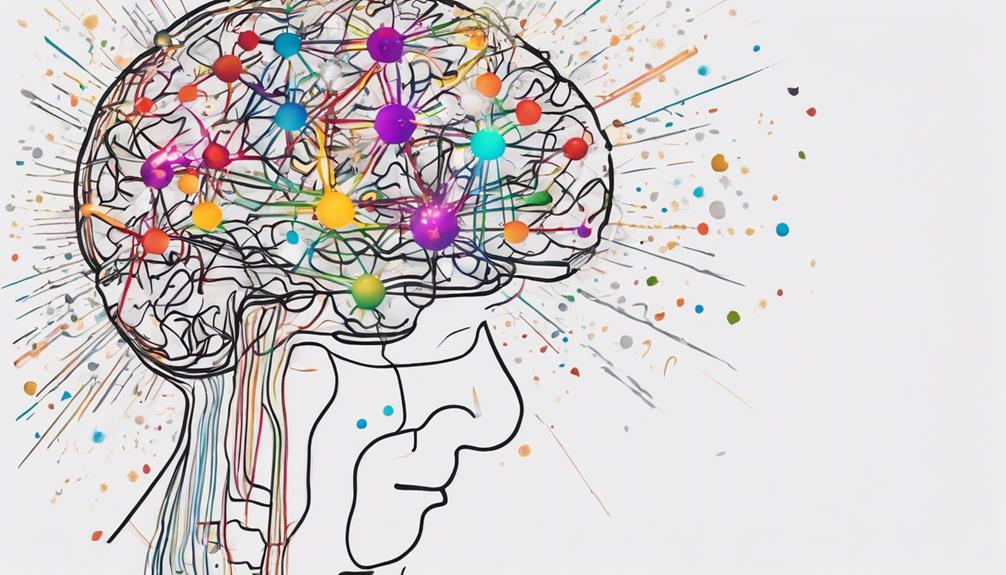
Studying the innovative practices of jazz musicians offers valuable insights into the intricate neural processes that drive spontaneous creativity. Jazz musicians, known for their high levels of creativity, provide a unique lens through which to understand the brain mechanisms involved in improvisation and creative expression. In jazz, improvisation demands rapid decision-making, adaptability, and the seamless integration of memory, imagination, and skill. This dynamic interplay highlights the complex neural processes that underlie creative thinking and performance.
| Jazz Musicians | Brain Mechanisms | Improvisation |
|---|---|---|
| Creative Expression | Memory | Neural Processes |
Analyzing jazz performances not only reveals the cognitive mechanisms at play during spontaneous innovation but also sheds light on how individuals can harness their creativity in various contexts. By delving into the world of jazz, researchers gain a deeper understanding of the cognitive processes that support creativity and innovation in all facets of human endeavor.
Unveiling Creative Cognitive Mechanisms
Understanding creative cognitive mechanisms is crucial in illuminating the intricate processes underlying human creativity. Brainstorming for ideas, making novel connections, and embracing uncertainty are fundamental aspects that contribute to the generation of innovative solutions. By unraveling how the brain navigates through these mechanisms, researchers can gain valuable insights into the complex nature of creative thinking.
Brainstorming for Ideas
Engaging in creative brainstorming sessions involves harnessing the dynamic interplay of cognitive mechanisms within the brain to facilitate the generation of innovative ideas. The process of brainstorming taps into various neural networks and cognitive functions to spark creativity. Here are key elements at play during brainstorming:
- Activating the default network for memory recall and imagination.
- Leveraging the hippocampus for flexible recombination of details.
- Employing cognitive control to guide thought processes towards exploring new ideas.
During brainstorming, balancing between structured thinking and free-flowing ideas is crucial for unlocking creative potential. Understanding how these brain mechanisms work together sheds light on the intricate process of generating novel and inventive solutions.
Making Novel Connections
Exploring the intricate network of connections within the brain unveils the foundation of creative cognitive mechanisms involved in making novel associations between existing concepts. The brain's ability to form novel connections is crucial for creative thinking, as it allows for the recombination of information stored in different areas. Creative cognition hinges on flexible thinking, enabling individuals to link seemingly unrelated ideas and create unique associations. By understanding how the brain establishes these novel connections, we gain insight into the process of generating original and innovative ideas. The brain's capacity to make these unique associations highlights its remarkable adaptability and creativity, showcasing the complex interplay of neural networks in fostering creativity through the synthesis of diverse concepts.
Embracing Uncertainty
Embracing uncertainty in the realm of creative cognition necessitates a willingness to navigate through ambiguity and delve into uncharted territories of potential thought processes. When individuals are open to new ideas, perspectives, and potential outcomes, creativity thrives. To embrace uncertainty effectively, one must engage in cognitive mechanisms such as risk-taking, experimentation, and divergent thinking. These mechanisms enable the exploration of unconventional paths and the generation of innovative solutions. By challenging conventional thinking and encouraging unconventional approaches, uncertainty fuels creativity, leading to breakthrough ideas and novel solutions to complex problems. Embracing uncertainty in the creative process is essential for pushing boundaries, fostering growth, and unlocking new possibilities in the world of innovative thinking.
Frequently Asked Questions
What Is Creativity and How Does It Work?
Creative thinking involves problem-solving, the innovation process, and artistic expression by fueling imagination to generate original ideas. This cognitive process taps into working memory, abstraction, planning, and cognitive flexibility. Neuroscientists study the brain to understand how connections and recombination of ideas lead to insightful moments or epiphanies. Creativity is defined by producing novel and valuable outcomes, requiring a blend of originality, pleasure, and imagination.
How Does the Brain Work With Creativity?
Brain activation during creative tasks involves a complex interplay of neural pathways linked to various cognitive functions. Studies indicate heightened activity in regions associated with problem-solving, imagination, and innovation. This process enables artistic expression by integrating input from different brain areas. Understanding how the brain collaborates during creative endeavors sheds light on the intricate mechanisms behind human creativity.
How Does the Creative Process Work?
The creative process is a multifaceted journey that encompasses creative inspiration, problem-solving, and artistic expression. It is influenced by outside factors and often involves a collaborative process that blends individual perspectives. Creativity unfolds as individuals engage in preparation, incubation, illumination, and verification stages. Each step contributes to the development and refinement of novel ideas, requiring critical evaluation to ensure quality and originality before finalization.
What Are the 3 Types of Creative?
The 3 types of creativity are Big-C creativity, which encompasses genius-level innovations and groundbreaking discoveries; little-c creativity, involving everyday problem-solving and practical applications of creativity; and mini-c creativity, focusing on personal expressions and unique hobbies. Big-C creativity is often associated with major societal impacts, little-c creativity enhances personal experiences, and mini-c creativity adds individuality and uniqueness to expression. Understanding these distinctions helps recognize the diverse manifestations of creativity in society and individuals.
Conclusion
In the vast landscape of the mind, creativity is a beacon of light, guiding us through the labyrinth of possibilities. Like a symphony conducted by the intricate dance of neural networks, creativity emerges as a harmonious blend of memory, imagination, and cognitive control. Through the lens of scientific inquiry, we unravel the mysteries of artistic expression, creative inspiration, and human innovation. The canvas of creativity awaits our exploration, inviting us to delve deeper into the boundless realms of human imagination.
